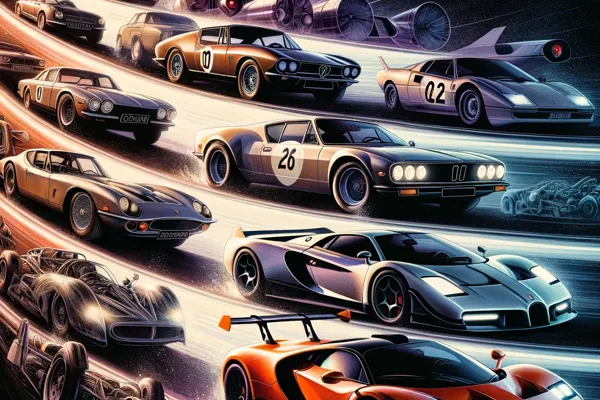The Evolution of Supercars: An Introduction
The world of supercars is a dazzling testament to human ingenuity and the relentless pursuit of speed. These vehicles, born from the desire to push the boundaries of automotive technology and design, have evolved dramatically over the decades. Each era has brought its own innovations, aesthetics, and legends to the forefront of the automotive world. Let's embark on a high-octane journey through time to explore the evolution of supercars, from their inception to the present day.
The Birth of Supercars: The 1960s Onwards
The concept of the supercar emerged in the 1960s, a time of optimism and technological innovation. The Lamborghini Miura, introduced in 1966, is often credited as the first true supercar. With its mid-engine layout, breathtaking speed, and striking design, the Miura set a new standard for what a sports car could be. It wasn't just a vehicle; it was a statement—a blend of art and engineering that captured the world's imagination.
The Turbocharged 1980s: Power Unleashed
The 1980s were a time of excess, and supercars reflected this spirit with more power, more speed, and more flamboyance. Turbocharging became a key method for boosting performance. The Ferrari F40, with its raw power and aggressive styling, epitomized the era. It was not just a car; it was an icon, a dream for many, and a reality for a fortunate few. The F40, along with rivals like the Porsche 959, pushed the limits of what was technologically possible.
The Technological Boom of the 1990s and 2000s: Pushing Boundaries
The 1990s and 2000s saw supercars incorporating advanced technology to achieve new levels of performance. The McLaren F1 became the fastest production car in the world in 1998, a title it held for years. Its use of carbon fiber, a central driving position, and a naturally aspirated V12 engine set it apart. The era also saw the rise of electronic aids in supercars, improving performance, safety, and drivability. Cars like the Porsche Carrera GT and the Enzo Ferrari introduced innovations that were once thought impossible, blurring the lines between road cars and race cars.
Today's Hypercars: The Modern Marvels
In the current era, the term "hypercar" has come to represent the pinnacle of supercar evolution. These are cars that not only excel in speed but also incorporate cutting-edge technology, exotic materials, and unparalleled luxury. The Bugatti Chiron, for example, has taken performance to new heights with its quad-turbocharged W16 engine. Meanwhile, electric technology has introduced a new player to the field: the Tesla Roadster promises to redefine acceleration benchmarks, making electric power a thrilling prospect in the supercar domain.
The Future of Supercars: Beyond Speed
As we look to the future, it's clear that the evolution of supercars is far from over. With advancements in electric powertrains, autonomous driving technology, and materials science, the next generation of supercars will continue to challenge our expectations. The pursuit of speed will always be central, but the way we achieve it—and the way we integrate it with sustainability and new forms of mobility—will define the supercars of tomorrow.
Conclusion
From the sleek and powerful machines of the 1960s to today's breathtaking hypercars, the journey of the supercar is a mirror to the advancements in automotive technology and design. Supercars are more than just vehicles; they are the embodiment of human aspiration, the relentless pursuit of excellence, and the desire to push beyond the limits of possibility. As we continue to innovate and dream, the supercar will evolve, ensuring that the journey is as exciting as the destinations yet to come.
